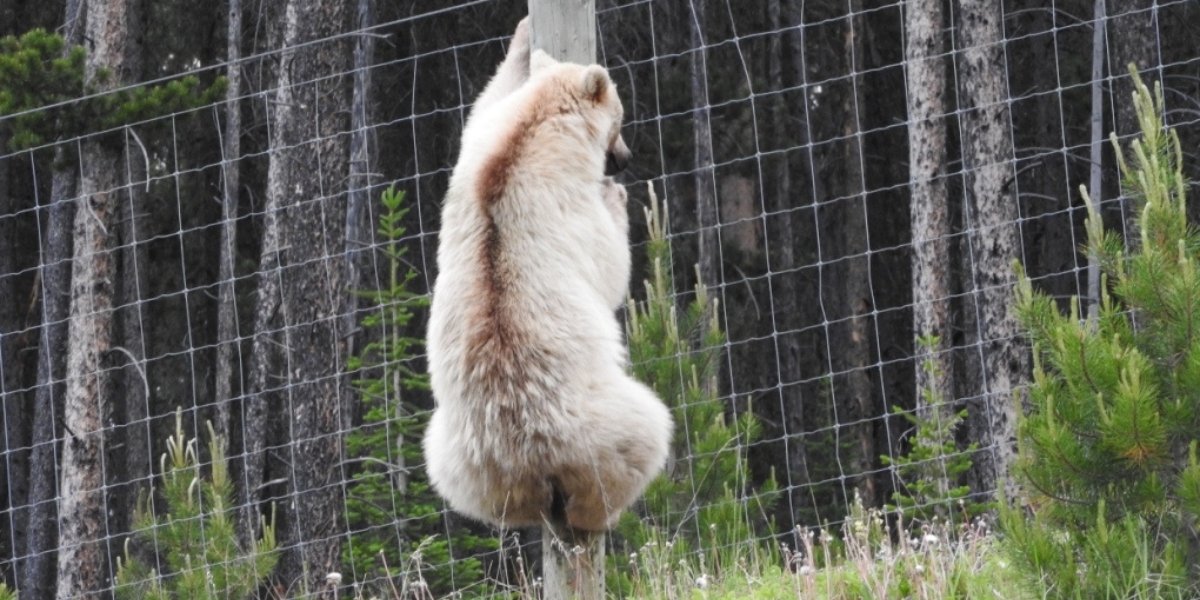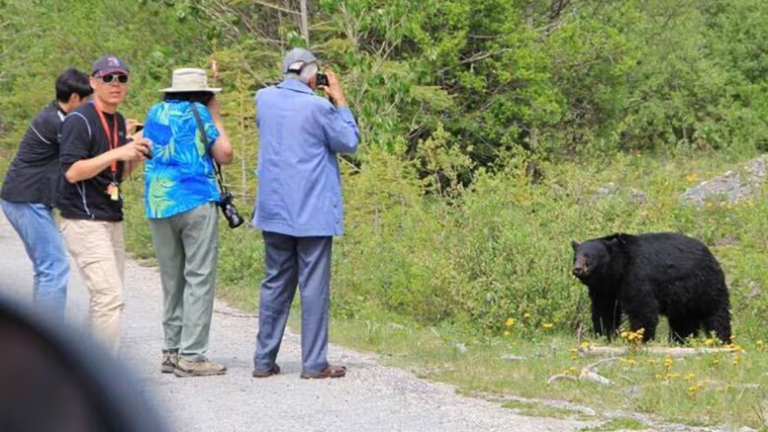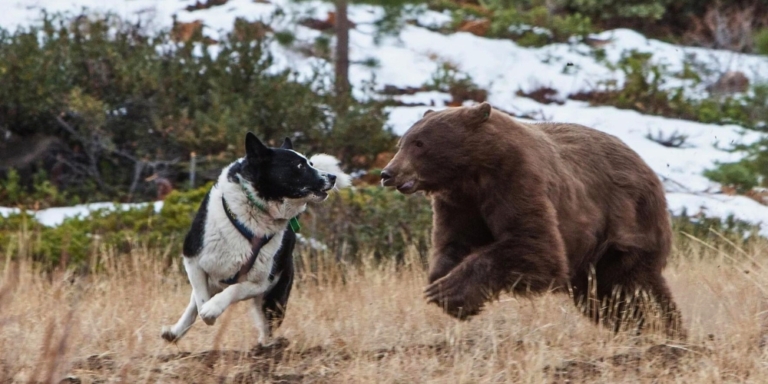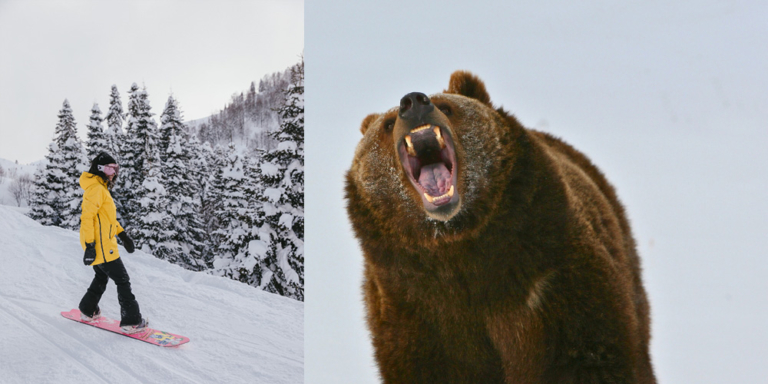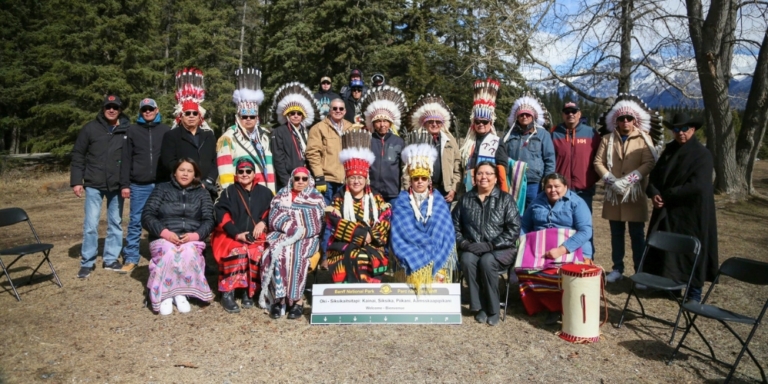Bear 178, also known as Nakoda, is a rare white grizzly living along the continental divide. She got her fill of beauty sleep over the winter, and now she’s out looking for food.
Lucky for her, the Trans Canada Highway is like an all-you-can-eat buffet. The ditches along the road are lush with dandelions in green and yellow colours.
However, there is one thing standing between Nakoda and her grub. A fence. This fence is meant to keep animals safe from cars and trucks.
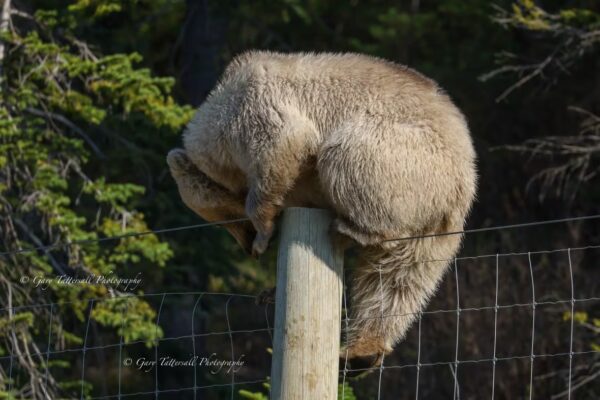
But this hasn’t stopped Nakoda. With her acrobatic skills, she climbs over the fence with ease. A hobby photographer named Gary Tattersall caught her in action.
“She was up, up, and over that fence. Very, very graceful. I was amazed at her agility!” Tattersall told CBC News.
While Nakoda’s acrobatics are impressive, climbing the fence puts her in danger of being hit by vehicles. Around this time last year, two grizzly bears were struck and killed on the Trans-Canada Highway.
Tattersall had seen Nakoda before when she was a cub with her mom. Now she’s a grown-up bear, six-and-a-half years old. He doesn’t want her to get hurt, so he’s glad the park rangers came to help and got her to the other side of the fence.
Seth Cherry, a Parks Canada wildlife ecologist, explained that Nakoda learned how to climb when she was just a little cub. She used to hang out near the highway and learned to climb the fence.
“She grew up in the Yoho and Banff area and spent time along the edge of the highway and did learn to climb that fence, I think when she was a lighter weight and smaller. But she’s still doing it into adulthood,” commented Cherry.
Last year, Nakoda had to be moved within her home range because she was spending too much time near the highway and train tracks.
A Electric Solution
This year, Parks Canada has a new plan to stop her from climbing. They are putting up electric wires on the fences that will give Nakoda a shock if she tries to climb over.
Cherry mentioned that Nakoda has already been caught climbing a few times this year. But she’s not the only bear that has learned this trick.
Parks Canada started adding electric wires to fences during the winter. They are focusing on the areas where bears are most active. So far, it seems to be working well, according to Cherry.
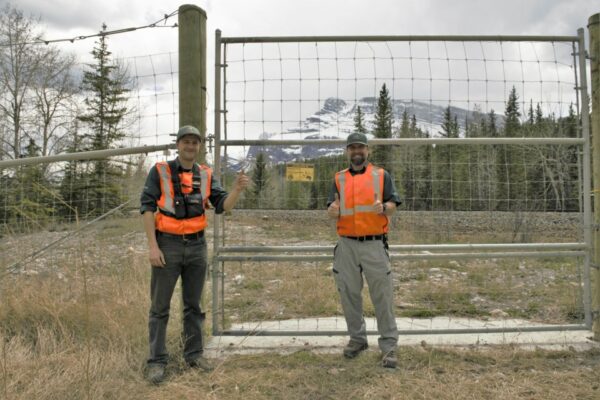
Park staff are putting up 15 kilometres of electric wiring on fences west of Lake Louise into the Yoho National Park border.
This isn’t the first time Parks Canada has done something like this. They used similar wires in Banff National Park to keep black bears, who are great climbers, from hopping the fence.
Nick De Ruyter, the Wild Smart program director at the Biosphere Institute of the Bow Valley, explained that bears come down to the valley during this time of year to find food, especially dandelions.
The problem is that many highway ditches have lots of dandelions, and bears remember where to find them.
That’s where the electric fences come in handy. They can discourage bears from going near the highway and keep them safe. It has worked in other places, according to De Ruyter.
“Any mitigation efforts they can do to help, you know, keep those bears off the highway and safe is a good thing,” said De Ruyter.
Tattersall supports anything that can protect Nakoda, even if it means he won’t see her on the road again.
“I’m all for it…It’s nice to see her on the wrong side of the fence because you get better pictures, but I don’t care about the pictures. I just want to see her survive,” said Tattersall.

